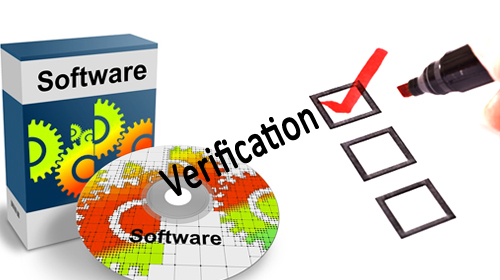


Verification is the process of checking or verifying the credentials, data or information to confirm their credibility and accuracy.In the field of software engineering, software verification is defined as the process of evaluating software product, to ensure that the development phase is being carried out accurately, to build the desired software product.
It is performed during the ongoing phase of software development, to ensure the detection of defects and faults in the early stage of the development life cycle and to determine whether it satisfies the requirements of the customer.
Software verification offers answers to our query of "Are we building the software product in a right manner?" However, if the software passes during the verification process, it does not guarantee its validity. It is highly possible that a software product goes well through the verification process, but might fail to achieve the desired requirements.
In the realm of the software industry, software verification plays an integral role in building the product as per the requirements and needs of the customer. Other features of software verification that signify its importance are:
Software verifications are of two types, each of which, is focused on verifying various aspects of the software and ensuring its high quality. Together, these two verification types ensure that the software conforms to and satisfies specified requirements. The two types of software verification are:
The process of software verification involves the assessment of the development phase and intermediary software product, based on the pre-defined specifications and guidelines.
It ensures that the methodology used for software development adheres to the specified specifications, set-up before the development phase, to build the correct software product.
Thus, this process requires cross-checking of these pre-defined specifications with the partially developed software product, to satisfy the process of carrying out the development of the product, in a right way.
As stated above, the process of software verification involves reviews, walkthrough, and inspection, which together helps to evaluate the accuracy of the product and ensure its quality. Therefore, defined below are these approaches of software verification:
The process of software verification can be performed through following approaches:
The advantages offered by software verification are numerous. It is among those processes, which makes the process of software development easy and allows the team to create an end product that conforms to the rules and regulations, as well as customer’s requirements. Other advantages of this process are:
Software verification and validation are two of the most important processes used for ensuring the quality and accuracy of the product. However, these are usually confused by people and used interchangeably. Hence, to help you here is a comparison between these two software testing techniques.
| Software Verification | Software Validation |
| 1. Software verification is the process of evaluating the development phase to ensure the accuracy of the software. | 1. Software validation evaluates the software during the development phase to ensure its compliance with business requirements. |
| 2. It is performed before the execution of software validation. | 2. It is performed once the process of software verification is completed. |
| 3. Verification ensures the product is being developed as per the requirements and design specification. | 3. Validation ensures that the software meets the user’s needs and is fit to be used by them. |
| 4. Evaluates plans, requirement specification, documents, test cases, etc. | 4. Evaluates the software product to verify its readiness to be released. |
Find out more differences between verification and validation in our article Verification Vs Validation.
In nutshell, it can be said that verification process, increases the development team's confidence of carrying out the development in a right way, so as to achieve expected final product along with the early detection of faults, defects and other issues, that may proves to be time and cost-saving.
Advertisement: